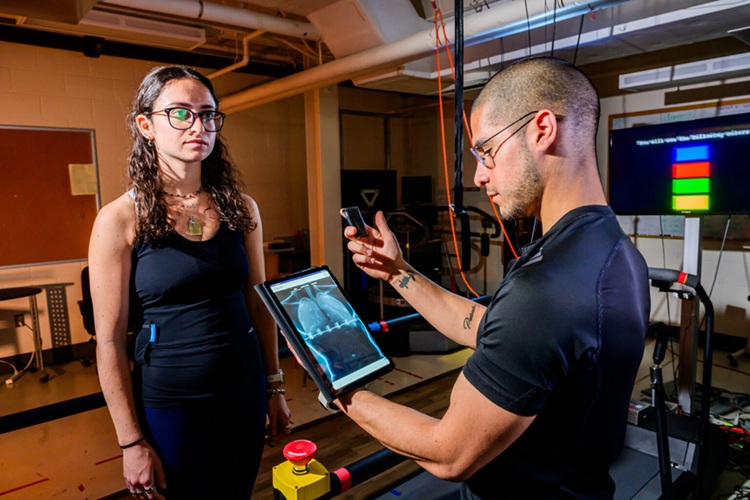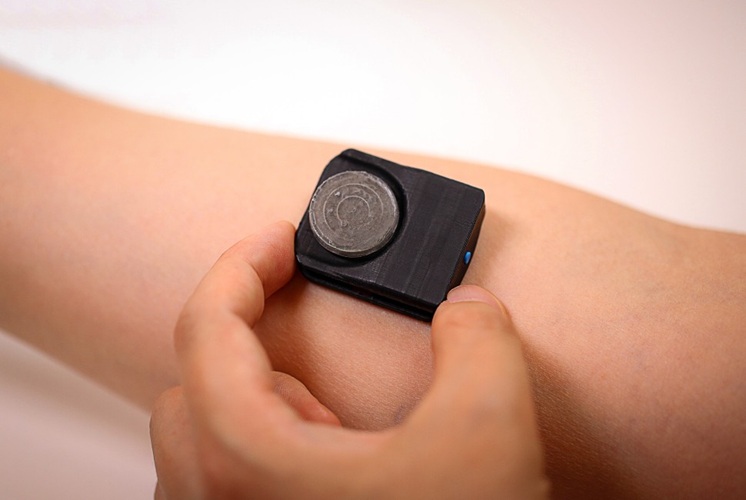Flexible Brain-Implantable Probe Accurately Measures Dopamine in Real-Time
|
By HospiMedica International staff writers Posted on 25 Dec 2023 |

Dopamine plays a vital role as a neurotransmitter in the central nervous system, influencing various brain functions like motivation, memory, and reward. Abnormal dopamine levels in the brain are linked to the onset of degenerative brain diseases, making it crucial to monitor these levels in patients with neurological disorders for accurate diagnosis and treatment. Current brain-implantable probes for measuring dopamine typically require the use of at least two separate probes and often have a rigid structure that is unsuitable for the soft tissue of the brain. These issues can lead to tissue damage or inflammation, compromising the probes' ability to consistently and accurately monitor dopamine levels. Although there have been attempts to develop brain-implantable probes using flexible devices, these solutions often still require either large or multiple probes to be inserted, posing a substantial risk of causing significant brain damage.
To overcome the limitations of existing probes, researchers at DGIST (Daegu, South Korea) have created an innovative device to measure dopamine concentrations accurately and in real-time, while minimizing brain damage. This breakthrough device utilizes a single, flexible probe implantable in the brain, promising to be a pivotal technology in developing patient-specific probes for those with degenerative brain conditions. This novel device enables precise dopamine tracking by safely and sustainably inserting a single flexible probe over the long term. The probe boasts a unique double-sided structure: one side houses the working and reference electrodes, while the other contains the counter electrode. This design doubles the measurable area compared to traditional single-surface probes, without increasing the insertion area.
The working electrode was notably enhanced by a complex three-dimensional nanorod structure made of zinc oxide (ZnO), significantly expanding the probe's specific surface area. This innovation positions the technology as a new, minimally invasive dopamine sensor, optimizing probe functionality while minimizing brain tissue damage. Additionally, the probe's electrodes are designed in a serpentine pattern to enhance mechanical stability, addressing the structural challenge of increased distance between the neutral layer of the probe and the electrodes during modification. This thoughtful design ensures the electrodes remain stable even when modified, marking a significant leap in brain disease diagnosis and treatment technology.
“The developed probe based on the double-sided structure facilitates highly precise and stable long-term dopamine concentration measurement, which was not achieved by the use of existing probes. It has the potential to serve as a standard for probe development to support patients with brain diseases,” said Jang Kyung-in, a professor affiliated with the Department of Robotics and Mechatronics Engineering at DGIST who led the research team.
Related Links:
DGIST
Latest Surgical Techniques News
- Intravascular Imaging for Guiding Stent Implantation Ensures Safer Stenting Procedures
- World's First AI Surgical Guidance Platform Allows Surgeons to Measure Success in Real-Time
- AI-Generated Synthetic Scarred Hearts Aid Atrial Fibrillation Treatment
- New Class of Bioadhesives to Connect Human Tissues to Long-Term Medical Implants
- New Transcatheter Valve Found Safe and Effective for Treating Aortic Regurgitation
- Minimally Invasive Valve Repair Reduces Hospitalizations in Severe Tricuspid Regurgitation Patients
- Tiny Robotic Tools Powered by Magnetic Fields to Enable Minimally Invasive Brain Surgery
- Magnetic Tweezers Make Robotic Surgery Safer and More Precise
- AI-Powered Surgical Planning Tool Improves Pre-Op Planning
- Novel Sensing System Restores Missing Sense of Touch in Minimally Invasive Surgery
- Headset-Based AR Navigation System Improves EVD Placement
- Higher Electrode Density Improves Epilepsy Surgery by Pinpointing Where Seizures Begin
- Open-Source Tool Optimizes Placement of Visual Brain Implants
- Easy-To-Apply Gel Could Prevent Formation of Post-Surgical Abdominal Adhesions
- Groundbreaking Leadless Pacemaker to Prevent Invasive Surgeries for Children
- Spectroscopy Technique Improves Surgery for Pediatric Epilepsy Patients
Channels
Critical Care
view channel
Novel Intrabronchial Method Delivers Cell Therapies in Critically Ill Patients on External Lung Support
Until now, administering cell therapies to patients on extracorporeal membrane oxygenation (ECMO)—a life-support system typically used for severe lung failure—has been nearly impossible.... Read more
Generative AI Technology Detects Heart Disease Earlier Than Conventional Methods
Detecting heart dysfunction early using cost-effective and widely accessible tools like electrocardiograms (ECGs) and efficiently directing the right patients for more expensive imaging tests remains a... Read more
Wearable Technology Predicts Cardiovascular Risk by Continuously Monitoring Heart Rate Recovery
The heart's response to physical activity is a vital early indicator of changes in health, particularly in cardiovascular function and mortality. Extensive research has demonstrated a connection between... Read more
Wearable Health Monitoring Device Measures Gases Emitted from and Absorbed by Skin
The skin plays a vital role in protecting our body from external elements. A key component of this protective function is the skin barrier, which consists of tightly woven proteins and fats that help retain... Read morePatient Care
view channel
Portable Biosensor Platform to Reduce Hospital-Acquired Infections
Approximately 4 million patients in the European Union acquire healthcare-associated infections (HAIs) or nosocomial infections each year, with around 37,000 deaths directly resulting from these infections,... Read moreFirst-Of-Its-Kind Portable Germicidal Light Technology Disinfects High-Touch Clinical Surfaces in Seconds
Reducing healthcare-acquired infections (HAIs) remains a pressing issue within global healthcare systems. In the United States alone, 1.7 million patients contract HAIs annually, leading to approximately... Read more
Surgical Capacity Optimization Solution Helps Hospitals Boost OR Utilization
An innovative solution has the capability to transform surgical capacity utilization by targeting the root cause of surgical block time inefficiencies. Fujitsu Limited’s (Tokyo, Japan) Surgical Capacity... Read more
Game-Changing Innovation in Surgical Instrument Sterilization Significantly Improves OR Throughput
A groundbreaking innovation enables hospitals to significantly improve instrument processing time and throughput in operating rooms (ORs) and sterile processing departments. Turbett Surgical, Inc.... Read moreHealth IT
view channel
Printable Molecule-Selective Nanoparticles Enable Mass Production of Wearable Biosensors
The future of medicine is likely to focus on the personalization of healthcare—understanding exactly what an individual requires and delivering the appropriate combination of nutrients, metabolites, and... Read more
Smartwatches Could Detect Congestive Heart Failure
Diagnosing congestive heart failure (CHF) typically requires expensive and time-consuming imaging techniques like echocardiography, also known as cardiac ultrasound. Previously, detecting CHF by analyzing... Read moreBusiness
view channel
Expanded Collaboration to Transform OR Technology Through AI and Automation
The expansion of an existing collaboration between three leading companies aims to develop artificial intelligence (AI)-driven solutions for smart operating rooms with sophisticated monitoring and automation.... Read more















